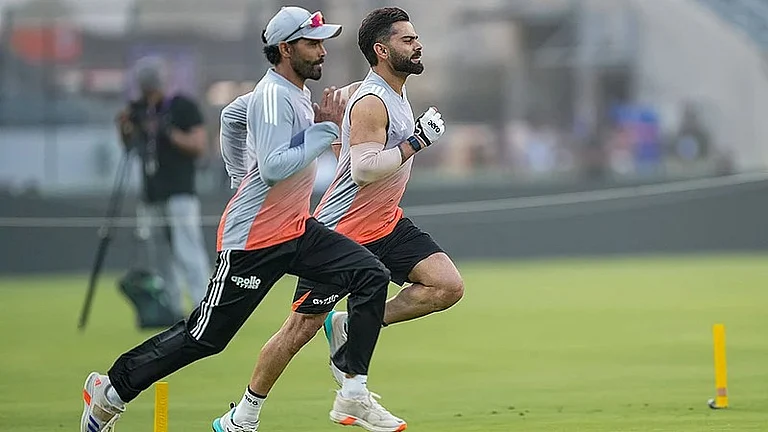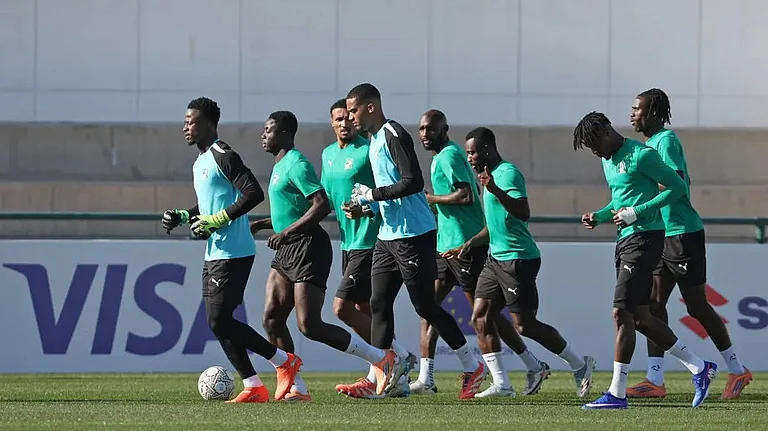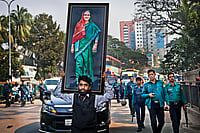India and Australia have come a long way since the 1998 nuclear tests when Canberra piled on New Delhi like a ton of bricks and called back its military attaché from India. The Vajpayee government was extremely cut up and relations remained frosty for some time. But much has changed with the flux in the global strategic order and a rising China’s belligerence in Asia. Concerns over China have brought India, the US, Japan and Australia together as part of the quadrilateral group to contain the Asian giant. With India and Australia sharing a common strategic threat, political understanding has grown leading to a quantum leap in engagement between the two. Relations have steadily improved over the last two decades.
It was therefore not surprising that India rolled out the red carpet for Prime Minister Anthony Albanese’s four-day visit. He arrived in Ahmedabad, travelled to Mumbai and was also in Delhi for official discussions with Prime Minister Narendra Modi at the last leg of his three-city visit to the country.
The talks today were aimed at further expanding the cooperation in a wide variety of sectors including defence, clean energy, education, critical minerals, supply chains, culture, as well as trade and business.
Defence ties with Australia have been growing rapidly, particularly in view of the quad engagement. Australia and Japan are now part of Malabar, the Indo-US joint naval exercises that began nearly thirty years ago. The Malabar exercises will be held in Australia for the first time.
In Mumbai, Albanese became the first foreign leader to visit INS Vikrant, India’s locally built aircraft carrier. While he was there, Albanese said: “For Australia, India is a top security partner. The Indian Ocean is central to both, the country's security and prosperity. And there has never been a point in both our country’s histories where we have had such a strong strategic alignment… we both depend on free and open access to sea lanes in the Indo-Pacific for our trade and economic well-being.’’ He also emphasized the need for a rule-based international order which is open and inclusive, in line with the Quad mantra.
Quad and China continue to loom large in India-Australia relations, though foreign secretary Vinay Mohan Kwatra made it clear during his briefing to reporters after the talks that bilateral ties were not forged on the basis of a third country.
Navdeep Suri, India’s former ambassador to Australia said that while China was a factor, it was certainly not the only one. Like India, Australia is also looking to diversify and expand ties across the region. “China has galvanized the relations but both India and Australia are well placed to expand ties. China has hastened the process with its bad behaviour with Australia economically, and [with] its activities at the India-China border in Ladakh… There is a bipartisan consensus in Australia for better relations with India. Both the Conservative and the Labor parties are on the same page. Albanese has carried forward Morrison’s momentum on India,” he said.
Prime Minister Narendra Modi, in his opening statement after the talks, said that bilateral security cooperation was an important pillar of the India-Australia comprehensive strategic partnership.
"Today we discussed maritime security in the Indo-Pacific region, and enhancing mutual defence and security cooperation," he said. "In the field of defence, we have made remarkable agreements in the last few years, including logistics support for each other's militaries. There is also regular and useful exchange of information between our security agencies, and we discussed further strengthening this."
Prime Minister Albanese dubbed the relations as "multi-faceted" and said he was looking forward to hosting Modi in Australia for the Quad leaders' summit in May and then returning to India in September for the G20 summit.
"Prime Minister Modi and I discussed the strength of our economic relationship demonstrated by the entry into force of the landmark India-Australia economic cooperation and trade agreement," he said.
Four MOUs were signed after the talks, including one on cooperation in sports, an agreement on audiovisual co-production, one on the terms of reference for a solar task force and a letter of intent on innovation cooperation.
Why had India-Australia ties been in the doldrums till recently?
“India saw Australia as an extension of the US during the Cold War era, and India was on the other side. During India’s nuclear tests of 1998, Australia took a tough position that angered New Delhi. Despite its commitment to non-proliferation, there was no restriction on uranium sale to China simply because Beijing had signed the Nuclear Non-Proliferation Treaty (NPT), and India had not. But China had broken all non-proliferation rules, while India did none of that despite not signing the NPT,” said Rajeshwari Rajagopalan of the Observer Research Foundation, a New Delhi-based think tank. She said that the relations were growing now across multiple sectors, with defence being an important component.
Business Delegation
The Australian prime minister brought with him a huge delegation of business leaders. Australia’s investments in India are not much. The business relations have not taken off, perhaps because Australian businessmen are said to be rather “risk-averse and conservative”. India, on the other hand, is seen as a “difficult” country to operate from. This is one loophole which needs to be filled. Australian businesses have mainly concentrated on China, which buys about a third of Australia’s exports. Despite concerns about China, Australia’s economy is closely tied to that country. Decoupling is unlikely in the near future even though Australia is now trying to wean its economy away from China.
Cricket Diplomacy
Albanese arrived in Ahmedabad on Holi and got a glimpse of the “festival of colour” organised for the dignitary in Raj Bhavan. Prime Minister Narendra Modi flew in on Thursday. Both leaders went to the Narendra Modi stadium in Ahmedabad, where India and Australia were playing the fourth test match of the Border-Gavaskar series. A bit of cricket diplomacy followed. The two took a lap around the field in an open shiny buggy, designed like a chariot of sorts to the cheers of the crowd. A song and dance number greeted the two leaders at the stadium adorned with pictures of them. Later, they met with the players. Since becoming the prime minister, Narendra Modi has regularly invited visiting leaders to his home town, from President Xi Jinping and his wife to US President Donald Trump and his family. Trump, who was greeted by thousands of enthusiastic locals, was quite overwhelmed by the reception and the size of the crowd.



























